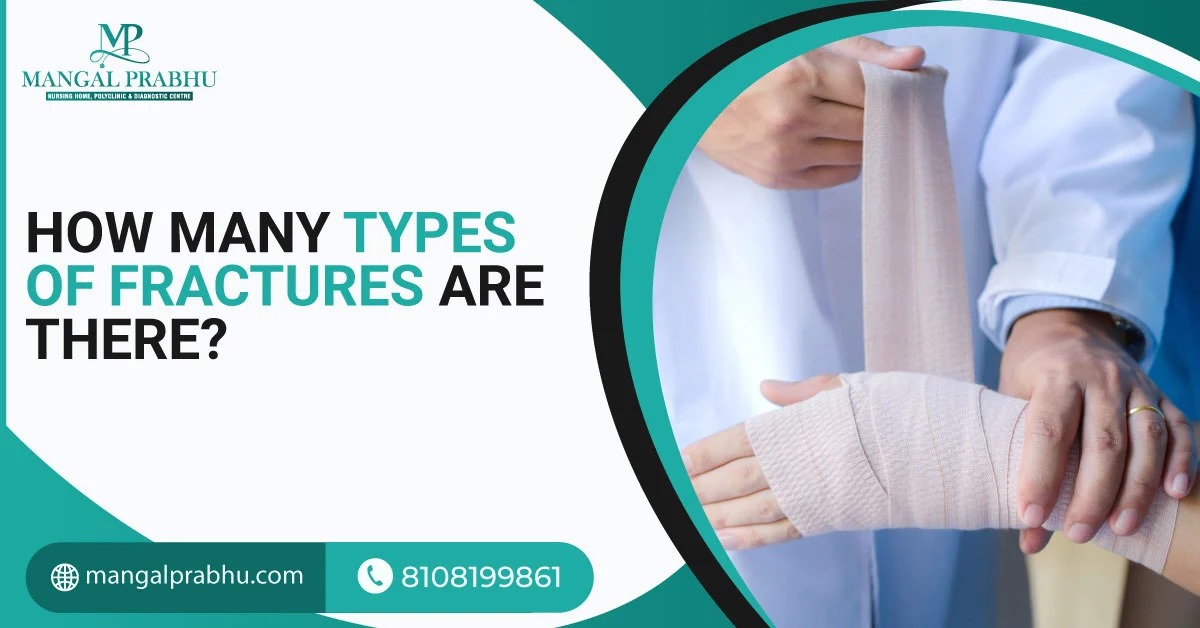
How Many Types of Fractures Are There?
Your bone density tends to decrease with age, increasing the risk of bone fracture. A bone fracture occurs when a heavy object hits your bones with a force greater than the bone can bear. The fracture can be minor; the bone may crack but doesn’t break completely. This can be fixed with casting and splinting. Or, it can be severe enough to break through the skin, increasing the risk of infection and other complications. In either case, it’s important to seek fracture treatment in Navi Mumbai to get your bones realigned. Read on to find out how many types of fractures are there.
Major Types of Fractures
a) Simple/Closed Fractures:
The bones break inside your skin but do not pierce through the skin. These are less complicated and often get better with immobilization and casting.
b) Compound/Open Fractures:
In a compound fracture, the bone fragments are visible on your skin. It creates a deep wound that requires immediate medical attention. You must see an orthopedic surgeon in Navi Mumbai to have it surgically repaired.
c) Greenstick Fractures:
Due to their increased bone flexibility, children are mainly affected by greenstick fractures. These occur when something hits their bones, breaking one side of the bone and bending the other.
d) Comminuted Fractures:
This is the worst type. The bones in comminuted fractures break into more than two pieces, often requiring a surgical repair. Because of their severity, comminuted fractures occur mostly during accidents and severe falls.
Specific Fracture Types
i) Transverse Fractures:
A transverse fracture results in the bone breaking horizontally into two pieces. It’s common in your leg or forearm bones. Treatment requires splints or surgery, depending on the severity of the damage.
ii) Oblique Fractures:
A sudden trauma to the bone can cause it to break diagonally. Oblique fractures are common in athletes, as they twist their arms and legs often during sports.
iii) Spiral Fractures:
Bones can also break spirally. Like oblique fractures, spiral fractures are common in people who forcefully twist their bones.
iv) Impacted Fractures:
Impacted fractures result in one end of the bone pushing into another due to serious trauma to the bones. These fractures can affect your ankles, hips, arms, and wrists. Since the bones do not break into pieces, you have a certain level of stability. That, however, doesn’t mean your bones are aligned. Treatment is required to restore your bones to their normal position.
Special Cases
A) Stress Fractures:
A fracture might occur from repetitive activities that put pressure on your bones. These are called stress fractures.
B) Pathologic Fractures:
These fractures occur because of a medical condition that can result in bone weakening to a degree that even a minor trauma can cause a severe fracture.
Prevention and Recovery
You can’t prevent situations, such as accidents or falls, that can lead to bone fractures. Here are a few tips that can help reduce your risk:
- Eat a diet rich in vitamin D and calcium
- Exercise regularly
- Resolve underlying medical conditions, such as osteoporosis.
Conclusion
Fractures are common during accidents and falls. Although anyone can get their bone fractured, people with low bone density are at an increased risk.
